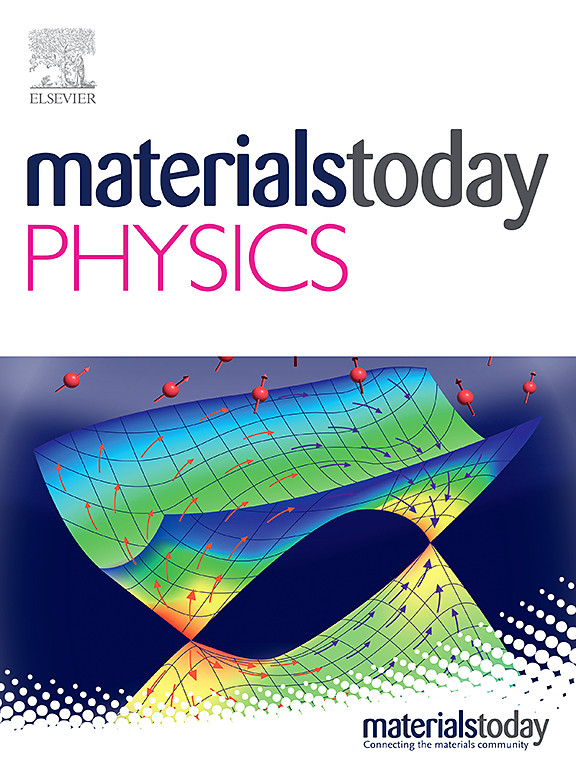Grain recovery facilitated low-angle grain boundaries and texture for high-performance BiSbTe alloys
IF 9.7
2区 材料科学
Q1 MATERIALS SCIENCE, MULTIDISCIPLINARY
引用次数: 0
Abstract
Low-angle grain boundaries (LAGBs) bring an effective scattering of phonons while maintaining a weak effect on charge carrier transport, which could be utilized for enhancing the thermoelectric performance of solid materials. In the Bi2Te3-based materials fabricated by hot extrusion (HE) technique, however, the formation of the LAGBs is evitably accompanied by severe recrystallization, resulting in texture loss and hindering further zT improvement. Here, we demonstrate a feasible strategy utilizing the grain recovery to maintain dense LAGBs with high grain orientation by the optimized HE technique. As a result, a low thermal conductivity of about 1 W m−1 K−1 and a high power factor of 4.2 mW m−1 K−2 are achieved at 300 K for p-type Bi0.5Sb1.5Te3 alloys, leading to a high room-temperature zT of 1.3. Further, with a decent flexural strength of 25.3 MPa, a 23-pair TE cooling module with the dice dimensions of 0.63 × 0.63 × 1.00 mm3 is assembled, which exhibits a maximum temperature difference of 87.8 K at a hot-side temperature Th of 350 K. These results highlight the important role of grain-recovery manipulation in simultaneously optimizing the thermal and electrical properties toward high-performance Bi2Te3-based TE materials.
促进低角度晶界和纹理恢复的高性能碲镉铋合金的晶粒恢复
低角度晶界(LAGBs)能有效散射声子,同时对电荷载流子传输保持微弱的影响,可用于提高固体材料的热电性能。然而,在通过热挤压(HE)技术制造的基于 Bi2Te3 的材料中,LAGB 的形成必然伴随着严重的再结晶,从而导致纹理损失,阻碍了 zT 的进一步提高。在此,我们展示了一种利用晶粒回复的可行策略,通过优化的 HE 技术保持高晶粒取向的致密 LAGB。因此,p 型 Bi0.5Sb1.5Te3 合金在 300 K 时的热导率低至约 1 W m-1 K-1,功率因数高至 4.2 mW m-1 K-2,室温 zT 高达 1.3。此外,由于挠曲强度达到 25.3 MPa,还组装出了一个 23 对 TE 冷却模块,其尺寸为 0.63×0.63×1.00 mm3,在 350 K 的热侧温度 Th 下显示出 87.8 K 的最大温差。这些结果凸显了晶粒回复操作在同时优化基于 Bi2Te3 的高性能 TE 材料的热性能和电性能方面的重要作用。
本文章由计算机程序翻译,如有差异,请以英文原文为准。
求助全文
约1分钟内获得全文
求助全文
来源期刊

Materials Today Physics
Materials Science-General Materials Science
CiteScore
14.00
自引率
7.80%
发文量
284
审稿时长
15 days
期刊介绍:
Materials Today Physics is a multi-disciplinary journal focused on the physics of materials, encompassing both the physical properties and materials synthesis. Operating at the interface of physics and materials science, this journal covers one of the largest and most dynamic fields within physical science. The forefront research in materials physics is driving advancements in new materials, uncovering new physics, and fostering novel applications at an unprecedented pace.
 求助内容:
求助内容: 应助结果提醒方式:
应助结果提醒方式:


